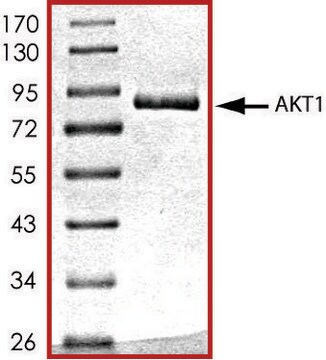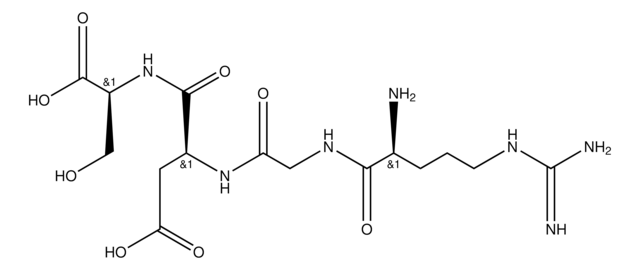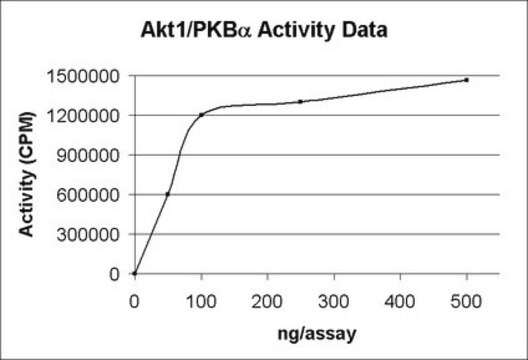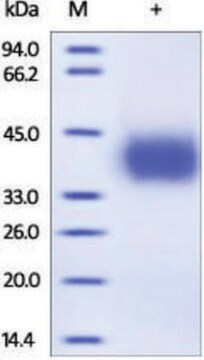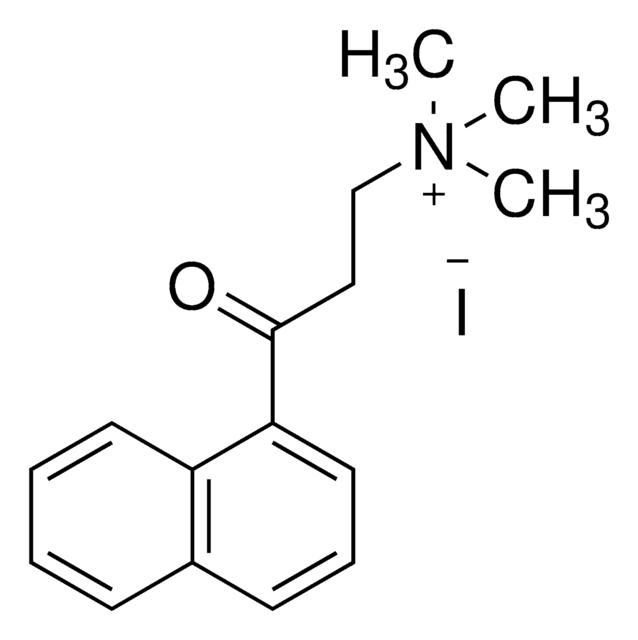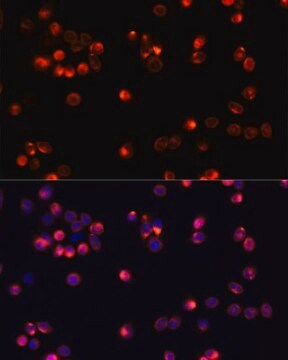SRP0353
Akt1 active human
recombinant, expressed in baculovirus infected Sf9 cells, ≥75% (SDS-PAGE)
Synonym(e):
PKB, RAC, v-akt murine thymoma viral oncogene homolog 1
About This Item
Empfohlene Produkte
Biologische Quelle
human
Rekombinant
expressed in baculovirus infected Sf9 cells
Assay
≥75% (SDS-PAGE)
Form
aqueous solution
Mol-Gew.
60.2 kDa
Verpackung
pkg of 10 μg
NCBI-Hinterlegungsnummer
UniProt-Hinterlegungsnummer
Versandbedingung
dry ice
Lagertemp.
−70°C
Angaben zum Gen
human ... AKT1(207)
Allgemeine Beschreibung
Anwendung
Biochem./physiol. Wirkung
Signalwort
Danger
H-Sätze
Gefahreneinstufungen
Eye Irrit. 2 - Repr. 1B - Skin Irrit. 2
Lagerklassenschlüssel
6.1D - Non-combustible acute toxic Cat.3 / toxic hazardous materials or hazardous materials causing chronic effects
WGK
WGK 1
Flammpunkt (°F)
Not applicable
Flammpunkt (°C)
Not applicable
Analysenzertifikate (COA)
Suchen Sie nach Analysenzertifikate (COA), indem Sie die Lot-/Chargennummer des Produkts eingeben. Lot- und Chargennummern sind auf dem Produktetikett hinter den Wörtern ‘Lot’ oder ‘Batch’ (Lot oder Charge) zu finden.
Besitzen Sie dieses Produkt bereits?
In der Dokumentenbibliothek finden Sie die Dokumentation zu den Produkten, die Sie kürzlich erworben haben.
Unser Team von Wissenschaftlern verfügt über Erfahrung in allen Forschungsbereichen einschließlich Life Science, Materialwissenschaften, chemischer Synthese, Chromatographie, Analytik und vielen mehr..
Setzen Sie sich mit dem technischen Dienst in Verbindung.